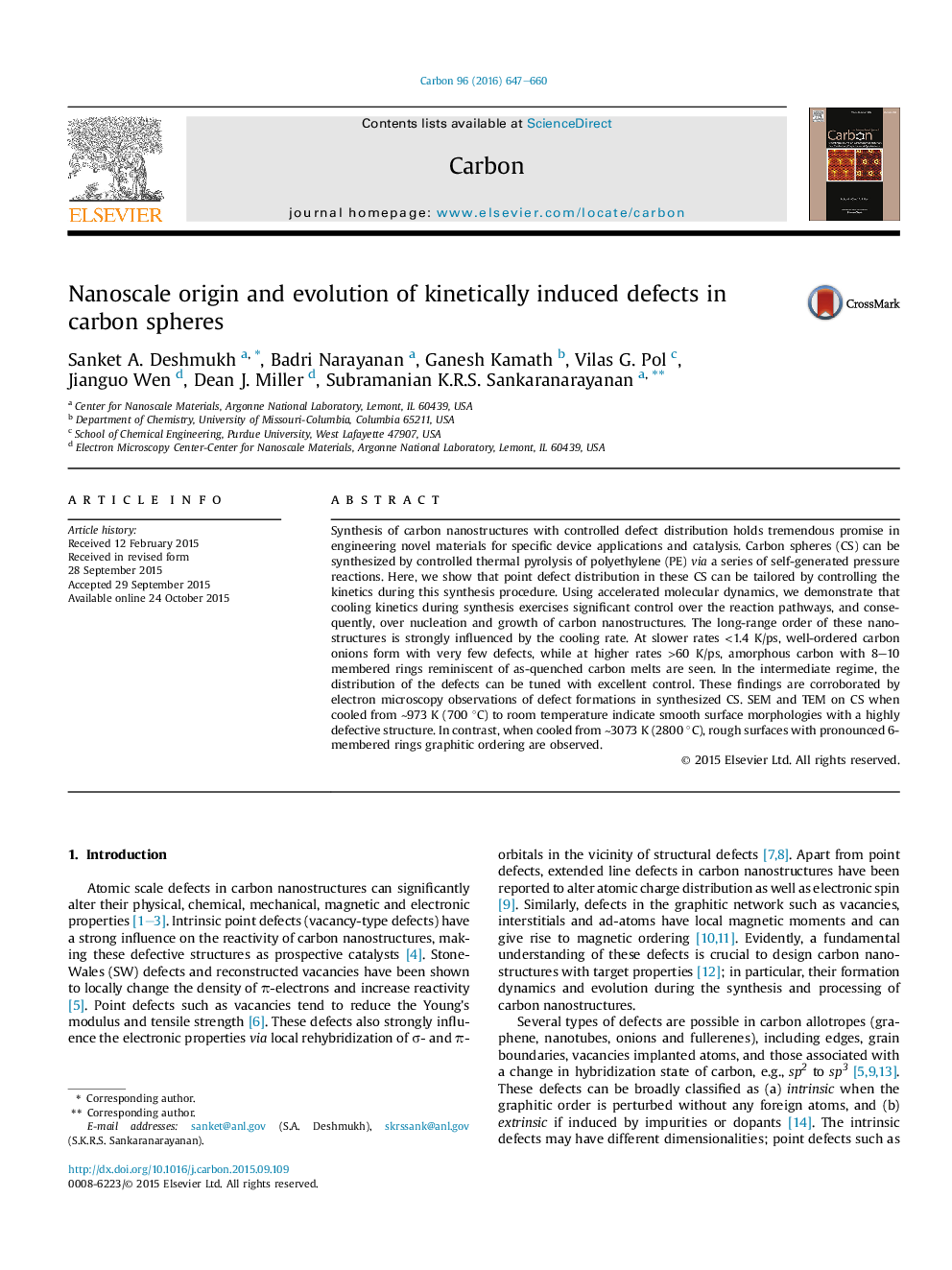| Article ID | Journal | Published Year | Pages | File Type |
|---|---|---|---|---|
| 7851275 | Carbon | 2016 | 14 Pages |
Abstract
Synthesis of carbon nanostructures with controlled defect distribution holds tremendous promise in engineering novel materials for specific device applications and catalysis. Carbon spheres (CS) can be synthesized by controlled thermal pyrolysis of polyethylene (PE) via a series of self-generated pressure reactions. Here, we show that point defect distribution in these CS can be tailored by controlling the kinetics during this synthesis procedure. Using accelerated molecular dynamics, we demonstrate that cooling kinetics during synthesis exercises significant control over the reaction pathways, and consequently, over nucleation and growth of carbon nanostructures. The long-range order of these nanostructures is strongly influenced by the cooling rate. At slower rates <1.4 K/ps, well-ordered carbon onions form with very few defects, while at higher rates >60 K/ps, amorphous carbon with 8-10 membered rings reminiscent of as-quenched carbon melts are seen. In the intermediate regime, the distribution of the defects can be tuned with excellent control. These findings are corroborated by electron microscopy observations of defect formations in synthesized CS. SEM and TEM on CS when cooled from â¼973 K (700 °C) to room temperature indicate smooth surface morphologies with a highly defective structure. In contrast, when cooled from â¼3073 K (2800 °C), rough surfaces with pronounced 6-membered rings graphitic ordering are observed.
Related Topics
Physical Sciences and Engineering
Energy
Energy (General)
Authors
Sanket A. Deshmukh, Badri Narayanan, Ganesh Kamath, Vilas G. Pol, Jianguo Wen, Dean J. Miller, Subramanian K.R.S. Sankaranarayanan,
